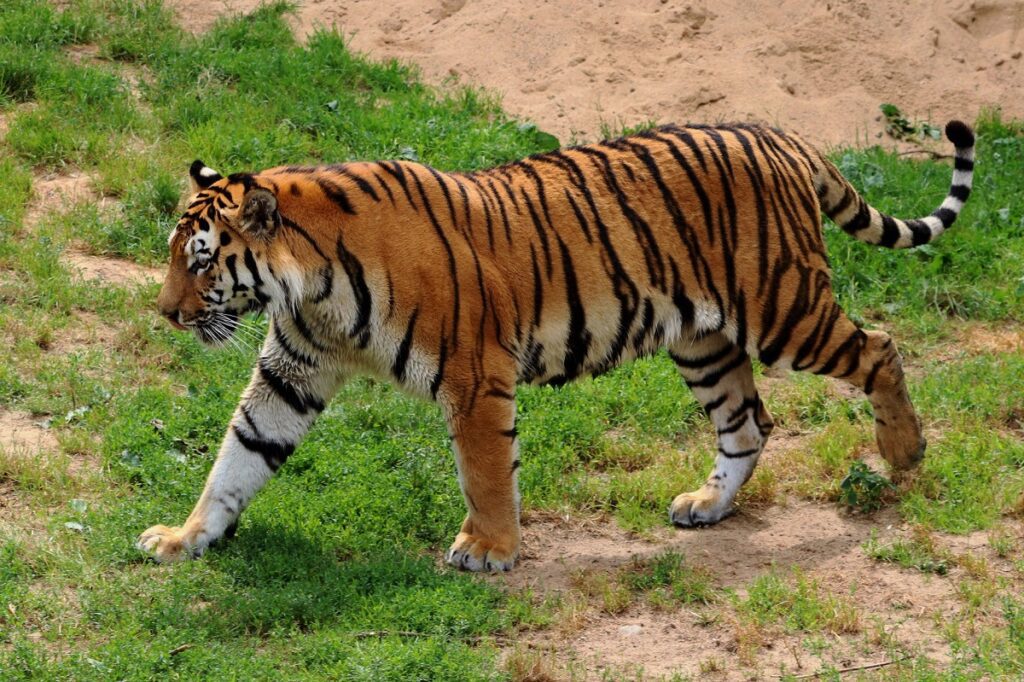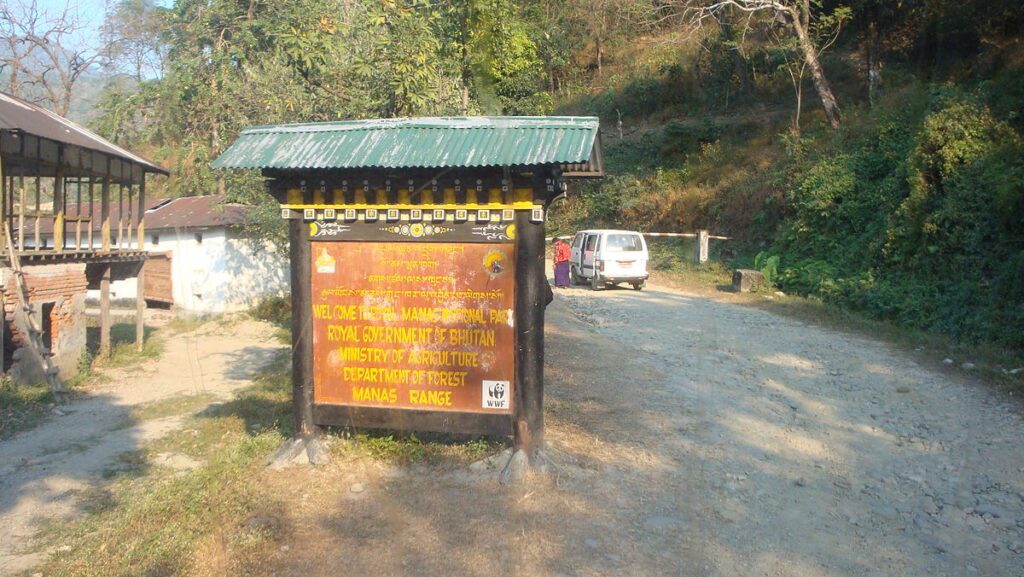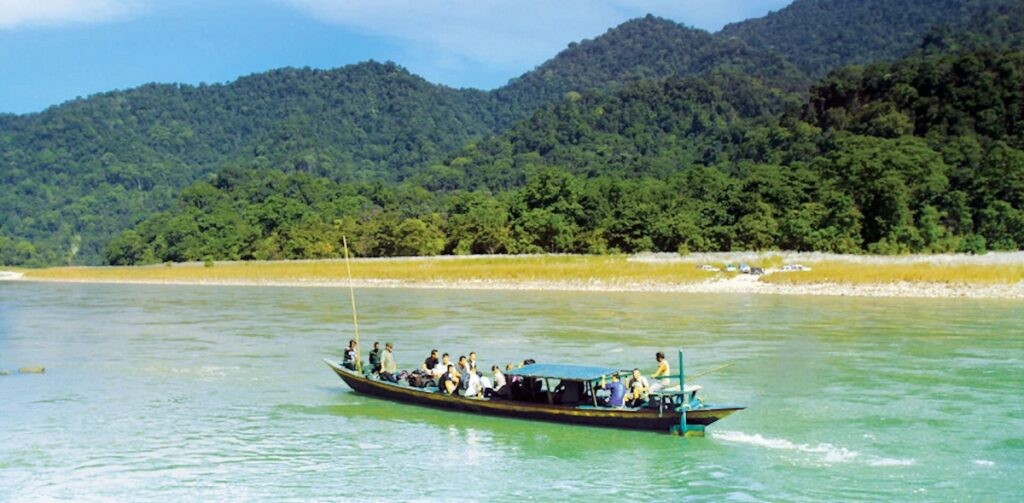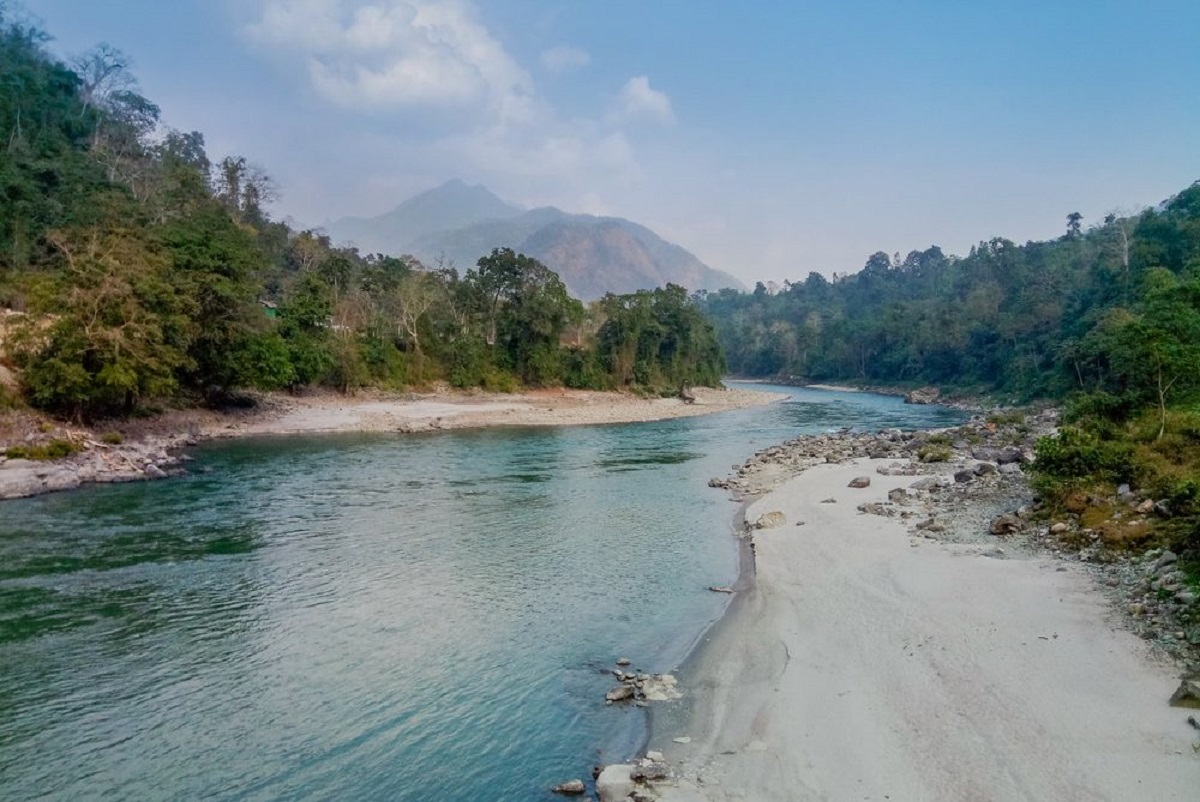Nestled in the southern foothills of the Himalayas, Royal Manas National Park is Bhutan’s most biodiverse and ecologically significant protected area. Often overshadowed by more famous attractions in the kingdom, this park remains a hidden gem for nature lovers and wildlife enthusiasts.
Established in 1966, Royal Manas National Park is also the oldest nature reserve in the country. It was upgraded to a national park in 1993 and is home to a remarkable variety of flora and fauna. Here’s our comprehensive guide on Royal Manas National Park;
Please Download Our Mobile App here.
Overview of Royal Manas National Park
Royal Manas National Park is located in the southern part of Bhutan, just east of the country’s border with India. As Bhutan’s oldest national park, it spans across the biodiverse foothills of Zhemgang, Sarpang, and Pemagatshel Dzongkhags. It is the fourth largest national park in the kingdom, spanning 408 square miles (1,057 sq km).
As the oldest protected area in Bhutan, it is lovingly known as the Conservation Showpiece of the Kingdom. Royal Manas is renowned for its diverse forest cover which include cold and warm broadleaved forests, lowland tropical forests, subtropical forests, and tropical monsoon forests. The park’s name derives from the Manas River, which flows through its heart, nourishing the land.
The streams that feed into the river create lush riverbeds, grasslands, and dense vegetation, providing a perfect environment for a variety of species. With 348 species of large trees blanketing much of the park, Royal Manas stands as a vibrant and essential part of Bhutan’s conservation efforts. Despite its immense ecological significance, tourism is still in its early stages here.
Wildlife in Royal Manas National Park

Royal Manas National Park boasts its own version of the “Big 5,” a term traditionally associated with African safaris. Royal Manas’ version includes the Bengal tiger, Indian rhinoceros, Asian elephant, clouded leopard, and the Asiatic water buffalo (gaur). These iconic species are complemented by other remarkable wildlife like leopards, civets, the endangered pygmy hog, and the elusive golden langur.
The park is also a paradise for birdwatchers, with over 425 species of birds, both resident and migratory, calling it home. For those with a keen eye, the park also harbors a staggering diversity of insects, with more than 10,000 species recorded. The park’s rivers are teeming with life, including the Ganges river dolphin and a variety of fish species, adding to the area’s rich aquatic biodiversity.
Best Time to Visit Royal Manas National Park
The ideal time to visit Royal Manas National Park is during the winter months from November to February. This period offers a more comfortable climate with pleasant temperatures, making it perfect for wildlife enthusiasts hoping to spot migratory birds and endemic species. During these months, rainfall is minimal, and while the weather remains relatively dry, the park’s lush landscapes continue to thrive.
Although the park is open year-round, sightings of animals are often influenced by luck and the expertise of the park’s guides. The monsoon season, spanning from May to September, brings heavy rainfall, averaging around 5,000 mm annually, which can make wildlife viewing more challenging. Therefore, winter months offer a better chance for clearer skies and optimal conditions for exploring the park’s diverse ecosystem.
Getting to Royal Manas National Park

To reach Royal Manas National Park in Bhutan, there are several routes depending on your preference for air or road travel. If you’re flying into Bhutan, you’ll first land at Paro International Airport, the country’s primary international gateway. From Paro, you can catch a domestic flight to either Gelephu or Bumthang if you’re in a hurry.
Once you arrive at either of these airports, you’ll continue your journey by road to reach the park. Alternatively, you can travel to Thimphu, Bhutan’s capital, and travel by road to the park. Take a taxi or bus from Thimphu to Gelephu, a subtropical town near the Indian border.
If you aren’t in any sort of rush, take a longer scenic route that passes through Trongsa, Bumthang, Mongar, and Panbang. The route offers beautiful views and birdwatching opportunities along the way. If you’re traveling from India, you can take a train to Barpeta Road and then proceed by road to the park.
Other Activities in Royal Manas National Park
The park’s rich habitats—spanning dense forests, mountains, and rivers—create an incredible environment for exploration. One of the most popular activities is an elephant safari, allowing visitors to experience the park’s wildlife up close while traversing through its thick jungle.
For those seeking a more adventurous challenge, hiking the Gomphu-Manas-Norbugang Eco-Trail provides a unique opportunity to trek through the heart of the park. This four-day journey, which takes hikers through jungle-covered slopes and rugged mountain terrain, is a rewarding experience for nature lovers.
Participants spend around four hours each day hiking, staying in eco-friendly camps that enhance the sustainable tourism efforts in the area. This combination of wildlife encounters and immersive hiking trails makes Royal Manas a truly special destination for nature enthusiasts.
Park Fees in Royal Manas National Park

The entry fee to Royal Manas National Park is 200 Bhutanese Ngultrum (BTN) or 200 Indian Rupees (INR) per person ($2). For those keen on safari experiences, the Bansbari Zone offers elephant rides, with prices for Indian nationals at INR 1400 ($17 USD) for a one-hour ride.
Foreigners are charged INR 3200 ($39 USD) per person for the same duration. It’s worth noting that safaris are unavailable every Tuesday, so plan accordingly. Other additional costs include an elephant seat fee of INR 1800 ($22 USD) per trip, and a road toll of INR 500 ($6 USD) per trip.
FAQs
What is the cost of Jeep Safari in Manas National Park?
The cost for a jeep safari in Royal Manas National Park typically ranges from Rs. 4500 to Rs. 5000 ($55 to $60 USD). Keep in mind that prices may vary slightly depending on the time of year, the type of safari, and the tour operator. It’s advisable to book your safari in advance to secure a spot, as the park can get busy during peak seasons.
Which animal is Manas National Park famous for?
Manas National Park is particularly renowned for its tiger population and its significant role in tiger conservation efforts. As of a 2021 survey, the park was home to 44 adult tigers, showcasing its importance in preserving these majestic big cats. In addition to tigers, Manas is also famous for its population of wild water buffalo, a species that thrives in the park’s unique ecosystem.
Conclusion
Royal Manas National Park is more than just a sanctuary for wildlife—it is a testament to Bhutan’s commitment to conservation and sustainable development. Its rich biodiversity, cultural heritage, and pristine landscapes make it one of the most valuable natural assets in Bhutan.




